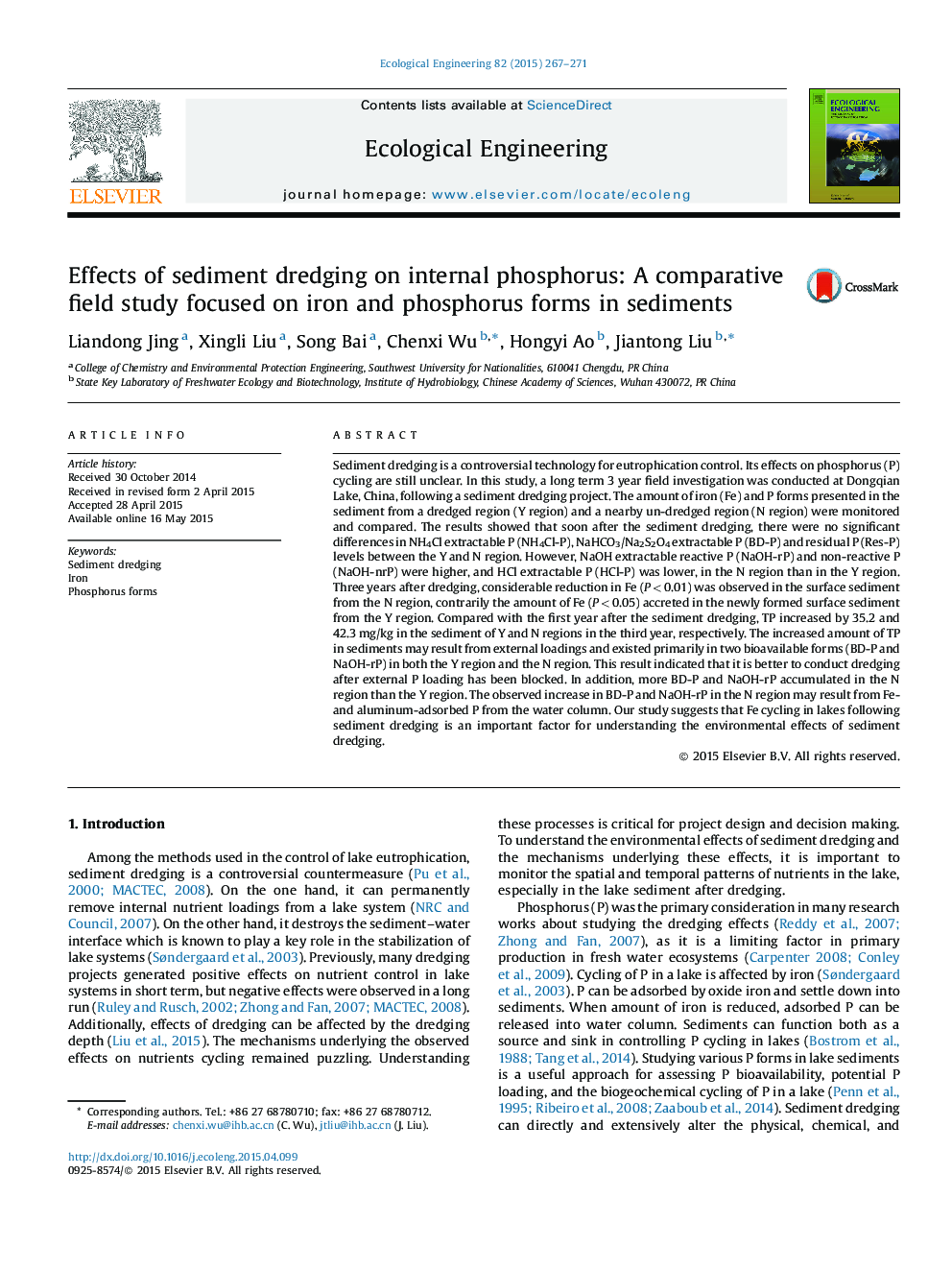| کد مقاله | کد نشریه | سال انتشار | مقاله انگلیسی | نسخه تمام متن |
|---|---|---|---|---|
| 4388971 | 1618017 | 2015 | 5 صفحه PDF | دانلود رایگان |
• Iron was released from a dredged region but accumulated in an un-dredged region.
• TP, BD-P, and NaOH-rP increased in both the dredged and the un-dredged regions.
• BD-P and NaOH-rP increased more in the un-dredged region than in the dredged region.
Sediment dredging is a controversial technology for eutrophication control. Its effects on phosphorus (P) cycling are still unclear. In this study, a long term 3 year field investigation was conducted at Dongqian Lake, China, following a sediment dredging project. The amount of iron (Fe) and P forms presented in the sediment from a dredged region (Y region) and a nearby un-dredged region (N region) were monitored and compared. The results showed that soon after the sediment dredging, there were no significant differences in NH4Cl extractable P (NH4Cl-P), NaHCO3/Na2S2O4 extractable P (BD-P) and residual P (Res-P) levels between the Y and N region. However, NaOH extractable reactive P (NaOH-rP) and non-reactive P (NaOH-nrP) were higher, and HCl extractable P (HCl-P) was lower, in the N region than in the Y region. Three years after dredging, considerable reduction in Fe (P < 0.01) was observed in the surface sediment from the N region, contrarily the amount of Fe (P < 0.05) accreted in the newly formed surface sediment from the Y region. Compared with the first year after the sediment dredging, TP increased by 35.2 and 42.3 mg/kg in the sediment of Y and N regions in the third year, respectively. The increased amount of TP in sediments may result from external loadings and existed primarily in two bioavailable forms (BD-P and NaOH-rP) in both the Y region and the N region. This result indicated that it is better to conduct dredging after external P loading has been blocked. In addition, more BD-P and NaOH-rP accumulated in the N region than the Y region. The observed increase in BD-P and NaOH-rP in the N region may result from Fe- and aluminum-adsorbed P from the water column. Our study suggests that Fe cycling in lakes following sediment dredging is an important factor for understanding the environmental effects of sediment dredging.
Journal: Ecological Engineering - Volume 82, September 2015, Pages 267–271
